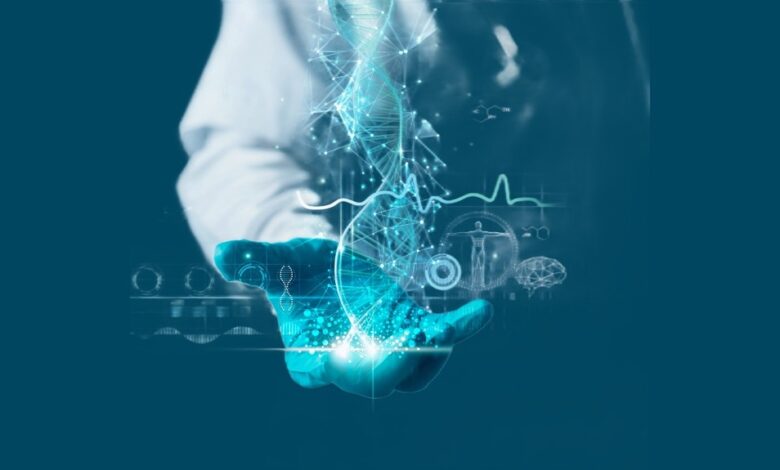CNIMS: Comprehensive Overview and Significance

In the ever-evolving landscape of healthcare and data management, CNIMS plays a vital role in ensuring efficiency, transparency, and systematic control. Whether you’re a policy maker, healthcare worker, or IT professional, understanding CNIMS is essential in the context of modern information systems. This article offers an in-depth exploration of CNIMS, its objectives, benefits, structure, and real-world applications.
What is CNIMS?
CNIMS, or Central Nodal Information Management System, is a centralized database and digital management platform designed to collect, store, process, and analyze crucial information across various domains, especially in public health, nutrition, and social welfare schemes. Developed by the Indian government (particularly under the Ministry of Women and Child Development), CNIMS primarily aims to track and manage data related to beneficiaries under national schemes like POSHAN Abhiyaan and Integrated Child Development Services (ICDS).
It integrates digital technology with service delivery frameworks to streamline information flow between field-level workers, supervisors, and administrators.
History and Background of CNIMS
The concept of CNIMS emerged from the growing need to manage large volumes of beneficiary data under social welfare schemes. Earlier, the process was manual, paper-based, and prone to errors. This not only delayed service delivery but also raised concerns about data authenticity, duplicate entries, and lack of transparency.
With the launch of POSHAN Abhiyaan (Prime Minister’s Overarching Scheme for Holistic Nutrition) in 2018, CNIMS became a critical tool to support the monitoring of nutritional outcomes. The Ministry envisioned a system that could provide real-time data analytics, better planning, and improved service delivery at the grassroots level.
Objectives and Purpose of CNIMS
The main objectives of CNIMS are as follows:
- Data Digitization: To create a digital database of beneficiaries and services across all states and union territories.
- Monitoring and Evaluation: To track real-time progress and effectiveness of schemes like ICDS and POSHAN Abhiyaan.
- Avoidance of Duplication: To ensure a single, verified record for each beneficiary to avoid redundancy and misuse.
- Resource Allocation: To help policy makers allocate funds, materials, and personnel more effectively based on accurate data.
- Transparency: To bring transparency and accountability into the system by reducing manual errors and manipulation.
- Decision Making: To enable data-driven decision-making processes at various levels of government.
CNIMS Registration and Beneficiary Tracking
CNIMS registration is carried out at the grassroots level by Anganwadi Workers (AWWs), Accredited Social Health Activists (ASHAs), or supervisors through mobile apps or web portals. Here’s how it works:
- Data Entry: AWWs input individual-level data of women, children, and adolescents using a digital platform.
- Verification: Data is verified by supervisors or higher authorities before final submission.
- Unique ID Generation: Each beneficiary is assigned a unique CNIMS ID, which ensures traceability and avoids duplication.
- Tracking: Health, nutrition, and welfare indicators for each individual are tracked regularly.
Beneficiaries include pregnant women, lactating mothers, children under 6 years, and adolescent girls.
Key Features of CNIMS
Some important features of CNIMS include:
- Real-Time Data Collection: Enables real-time updates from the field.
- Integrated Dashboard: For supervisors and government officials to monitor key indicators.
- Mobile App Integration: Field workers can use mobile applications to collect and upload data.
- Geo-Tagging: Location-based services for monitoring Anganwadi Centers (AWCs).
- Performance Analytics: Built-in tools for data visualization and trend analysis.
- Secure Database: Ensures data privacy and protection through encryption and access controls.
CNIMS and POSHAN Abhiyaan
POSHAN Abhiyaan is India’s flagship program to improve nutritional outcomes for children, pregnant women, and lactating mothers. CNIMS is the backbone of data management for this mission.
Through CNIMS, the government can:
- Identify malnourished children and target interventions.
- Track the supply and consumption of supplementary nutrition.
- Monitor growth parameters such as weight and height.
- Plan capacity-building sessions for field-level workers.
- Provide alerts for vaccinations, health checkups, and dietary plans.
Without CNIMS, such data-driven approaches would be impossible at scale.

CNIMS and the Role of Technology
The technological framework of CNIMS includes:
- Cloud-Based Infrastructure: Enables centralized access and scalability.
- Artificial Intelligence (AI): Helps analyze patterns and predict outcomes like high-risk pregnancies or severely underweight children.
- Mobile App (Common Application Software – CAS): Used by Anganwadi workers to input data in real-time.
- Big Data Analytics: CNIMS aggregates millions of data points, enabling high-level insights and predictive modeling.
- Data Interoperability: CNIMS often integrates with other government databases like Aadhaar, health records, and education systems.
This digital architecture ensures CNIMS remains a robust and reliable tool for welfare monitoring.
Challenges Faced by CNIMS
Despite its benefits, CNIMS faces several challenges, including:
- Digital Literacy: Many field workers are not comfortable using smartphones or computers.
- Internet Connectivity: Rural and remote areas often lack stable internet, delaying data uploads.
- Data Accuracy: Human errors in data entry can affect decision-making.
- Device Shortage: Limited availability of mobile devices for all Anganwadi Workers hampers timely data collection.
- Training and Support: Continuous training and tech support are necessary for effective implementation.
These challenges must be addressed through consistent policy support and infrastructure development.
CNIMS Success Stories and Case Studies
In states like Tamil Nadu, Maharashtra, and Gujarat, CNIMS has shown remarkable success:
- Reduction in Malnutrition: Targeted interventions through CNIMS have led to measurable declines in malnutrition rates.
- Improved Monitoring: Officials now have daily, weekly, and monthly dashboards to evaluate service delivery.
- Quick Response: Immediate alerts generated for high-risk children have helped in early intervention.
- Better Fund Utilization: Accurate beneficiary data ensures appropriate and timely fund disbursement.
Such examples prove the effectiveness of CNIMS when implemented with proper support and training.
Future Prospects of CNIMS
The future of CNIMS looks promising as it continues to evolve. Upcoming initiatives include:
- Integration with Health Management Information Systems (HMIS).
- AI-Powered Predictive Tools for early disease detection.
- Voice-Based Data Entry to assist semi-literate workers.
- Real-Time Nutritional Dashboards accessible to the public for increased transparency.
- Multilingual Interfaces to expand usage in diverse linguistic regions.
With India’s increasing emphasis on Digital Governance, CNIMS will remain a critical asset.
Conclusion: CNIMS as a Catalyst for Data-Driven Welfare
CNIMS represents a paradigm shift in the way social welfare data is managed and utilized in India. By enabling real-time, accurate, and centralized information flow, it empowers decision-makers, strengthens monitoring mechanisms, and ensures targeted delivery of services.
While challenges exist, the advantages of CNIMS far outweigh them. The system’s integration with technological advancements like AI, mobile computing, and cloud infrastructure ensures scalability and sustainability. As India marches towards a more data-driven governance model, CNIMS stands at the forefront as a model for public-sector digital transformation.
